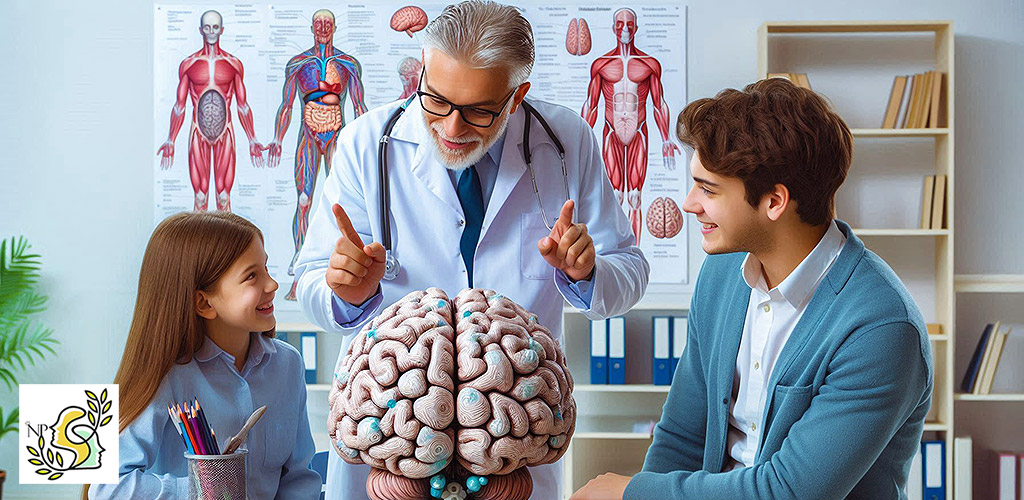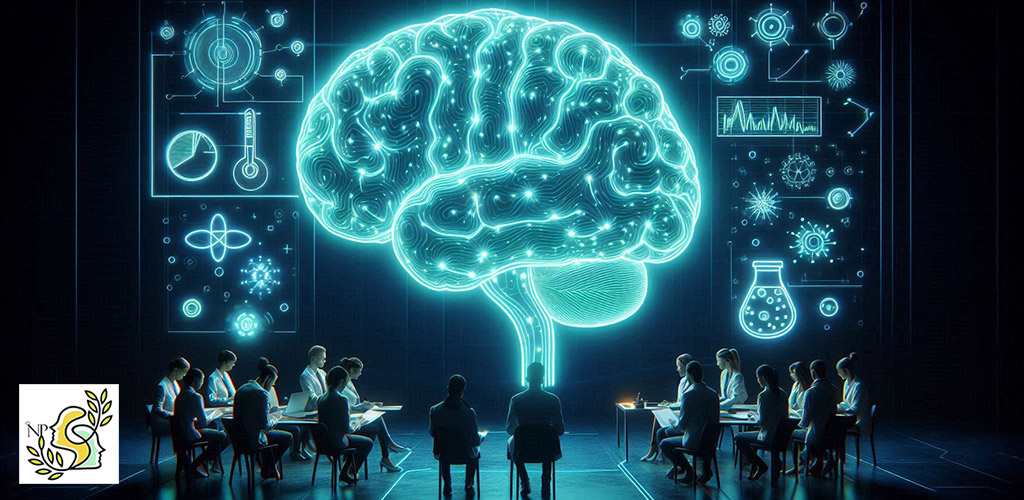Cognitive neuropsychology is a branch of psychology that explores how brain structures and processes influence thought, emotion, and behavior. By studying individuals with brain injuries or neurological disorders, cognitive neuropsychologists aim to uncover the mechanisms that underlie human cognition. Understanding how these brain functions can be disrupted provides insight into normal and abnormal mental processes, ultimately deepening our comprehension of the human mind.
This essay will explore the principles of cognitive neuropsychology, examining the relationship between the brain’s structure and mental functions, as well as the implications of neurological disorders. Additionally, it will investigate specific case studies to illustrate how cognitive neuropsychology contributes to the diagnosis, treatment, and potential prevention of brain-related disorders. The goal is to provide a comprehensive overview of cognitive neuropsychology, highlighting its significance in neuroscience and mental health, as well as its role in advancing therapies and interventions for individuals with cognitive impairments.
Table of Contents
What is cognitive neuropsychology?

Cognitive neuropsychology definition refers to the study of how cognitive processes are affected by brain injuries and disorders. Cognitive neuropsychology is a branch of cognitive psychology that focuses on understanding the mental information-processing procedures people use when performing cognitive tasks. This field aims to uncover how cognition can break down following brain damage. It is distinct from cognitive neuroscience; cognitive neuropsychology centers on the mind, whereas cognitive neuroscience examines the brain, specifically the mechanisms that support cognition. In the field of Neuropsychology, researchers study the relationship between brain function and behavior.
The methods used in cognitive neuropsychology can also address developmental cognitive disorders, such as dyslexia and specific language impairment; this research falls under the umbrella of developmental cognitive neuropsychology. Additionally, these methods can be employed to explore higher-level cognitive functions, such as belief formation and theory of mind. When cognitive neuropsychology investigates disorders related to these high-level aspects, such as delusions, hallucinations, or confabulations, it is referred to as cognitive neuropsychiatry.
Key characteristics of cognitive neuropsychology include: (a) it investigates symptoms rather than syndromes; (b) it relies on single-case studies instead of group studies; (c) its primary source of data comes from double dissociations between symptoms; and (d) it is committed to modular modeling of cognition.
Neuropsychology includes various subfields that includes different sub-fields, each of which deals with specialized topics:
Aging Neuropsychology and Cognition
Aging Neuropsychology and Cognition tackles topics on Dementia, which can potentially contribute to the wider field of Disease. Aging Neuropsychology and Cognition explores how cognitive functions like memory, attention, language, and executive processes change with age, and the neural mechanisms underlying these changes.
With age, cognitive decline is a natural process, but the extent and nature vary significantly among individuals. Research in this field seeks to distinguish between normal aging and pathological conditions, such as Alzheimer’s disease and other dementias, to develop effective interventions. Advancements in neuroimaging and neuropsychological assessments have enabled a deeper understanding of how brain structures like the hippocampus and prefrontal cortex contribute to cognitive decline and resilience. This field emphasizes the impact of lifestyle factors, such as physical activity, mental engagement, and social connections, on cognitive health, suggesting potential strategies for enhancing cognitive reserve and slowing decline in later life.
The purposes of Aging, Neuropsychology, and Cognition are to
- publish research on both the normal and dysfunctional aspects of cognitive development in adulthood and aging
- promote the integration of theories, methods, and research findings between the fields of cognitive gerontology and neuropsychology
The study of aging neuropsychology and cognition impact factor is crucial for understanding the effects of aging on mental processes. The impact factor of studies in aging neuropsychology highlights their significance and contribution to our understanding of cognitive aging. Higher impact factors indicate influential research that can guide interventions, improve diagnostic tools, and inform care strategies for age-related cognitive disorders. As the global population continues to age, the importance of this research grows, emphasizing the need for ongoing exploration into how aging affects cognition and the neuropsychological mechanisms underlying these changes.
Cognitive neuropsychology vs cognitive neuroscience
Cognitive neuropsychologists focus on understanding the mind rather than solely the brain. This is why cognitive neuropsychology is considered a subfield of cognitive psychology. The goal of cognitive neuropsychology is to investigate human cognition through various neuropsychological methods, which may include studying brain pathology, brain activity recording, stimulation, brain imaging, or examining developmental deficits.
On the other hand, cognitive neuroscience is a subfield of neuroscience that explores the biological processes underlying human cognition. This area of study specifically examines the relationship between brain structures, their activity, and cognitive functions.
Cognitive neuroscience vs neuropsychology
Neuropsychology is the branch of science that investigates the physiological processes of the nervous system and how they relate to behavior and cognition. It examines both the normal functions of the brain and the dysfunctional processes that can occur following brain damage.
Cognitive neuroscience, on the other hand, is the scientific study of the biological foundations of mental processes. This includes areas such as perception, consciousness, action, memory, decision-making, language, and selective attention. The primary goal of cognitive neuroscience is to measure brain activity associated with these mental processes.
Cognitive neuroscience and neuropsychology
Cognitive neuroscience aims to understand how brain activity relates to mental processes. It investigates how the chemical and electrical signals generated by neurons give rise to cognitive functions such as perception, memory, understanding, insight, and reasoning. Neuropsychologists assess and treat individuals with various nervous system disorders, collaborating closely with medical professionals, including neurologists. Conditions, injuries, and diseases affecting the brain and nervous system can significantly influence a person’s thoughts, feelings, and behaviors.
Cognitive psychology and neuropsychology
introduction to cognitive psychology and neuropsychology, Cognitive psychology is the scientific study of mental processes such as attention, language use, memory, perception, problem solving, creativity, and reasoning. The cognitive approach is a psychological perspective that emphasizes the study of mental processes such as thinking, perception, attention, and memory. This approach suggests that our thoughts, beliefs, and attitudes affect our behavior and emotions. What’s the difference? Neuroscience focuses on the brain’s structure and the regions that are activated when people engage in various tasks. Cognitive Psychology, on the other hand, focuses on the mind and behavior.
Neuropsychology and Cognitive neuropsychology careers
Opportunities and careers in cognitive neuropsychology are:
- Cognitive Neuropsychologist
- Developmental Cognitive Neuropsychologist
- University teaching and research
- School Neuropsychology Consultation
- Neuropsychology researcher for public and private organizations
- Neurogenetics Psychologist
- Neuropathology Specialist
- Behavioral Neuropsychologist
- Forensic Neuropsychologist
- Rehabilitation Neuropsychologist
- Dementia Neuropsychologist
- Clinical Neuropsychologist
The relationship between the brain’s structure and mental functions

From a structural perspective, the size and integrity of brain structures contribute to individual differences in cognitive function. The human brain is a highly complex biological system, and one of neuroscience’s key questions is how cognitive functions arise from billions of neurons. Magnetic resonance imaging (MRI) has become a valuable tool in cognitive neuroscience, providing structural and functional brain images that help researchers explore cognitive mechanisms. Variations in brain size and integrity can partially explain differences in cognitive abilities among individuals.
Functionally, the brain operates through a cooperative dynamic among different regions, which are composed of basic brain units. Cognitive impairments are often associated with structural abnormalities, including changes in both cortical and subcortical gray and white matter. In the early stages of some neurodegenerative diseases, abnormal functional connectivity in the brain may be observed.
Many cognitive studies tend to focus on either the structural connectome (SC) or the functional connectome (FC) in isolation, overlooking the potential connections between the two. However, anatomy and physiology are closely related and interdependent; both brain structure and function are inherently connected. With advancements in multimodal imaging, researchers have observed a network-level consistency between the SC and FC. In healthy adults, white matter integrity and the strength of functional connectivity often show a positive correlation.
This correlation indicates that structurally interconnected brain regions may exhibit strong functional connectivity patterns. Neurological diseases can affect both brain structure and function, highlighting the intrinsic relationship between them. The association between structural and functional connections, known as SC-FC coupling, remains an underexplored area, especially regarding specific brain regions, resulting in inconsistent findings. Some studies have shown stronger SC-FC coupling in cognitively impaired older adults, while others suggest that robust SC-FC coupling in cortical regions enhances effective communication within the functional network.
Research indicates that in older adults, the integrity of white matter declines, which limits increases in functional connectivity. This decline influences cognitive improvement with aging. The bilateral medial orbitofrontal region, part of the default mode network, has shown a significant positive correlation with age. Additional studies have examined how SC-FC coupling varies by age and sex, finding that males typically have higher SC-FC coupling than females. This difference also affects the relationships among SC-FC coupling, working memory, and reasoning abilities.
Despite these insights, the connection between SC-FC coupling and cognitive function remains ambiguous. It is thought that cognition results from functional connectivity, which is shaped by structural connectivity. During aging, increased structural-functional coherence may help maintain basic brain function, while imbalances in this coherence could serve as a compensatory mechanism to preserve function in the face of structural changes.
Overall, gaining a nuanced understanding of the similarities and differences between brain structure and function about cognitive function is crucial for advancing our knowledge in this field.
Neurocognitive disorders
Neurocognitive disorder is a general term that describes decreased mental function due to a medical disease other than a psychiatric illness. Cognitive disorders include dementia, amnesia, and delirium. In these disorders, patients are no longer fully oriented to time and space. Depending on the cause, the diagnosis of a cognitive disorder may be temporary or progressive. These disorders can result from various causes, including aging, brain injury, neurodegenerative diseases, or other underlying medical conditions. Neurocognitive disorders are grouped into three subcategories:
- Delirium.
In the video below, you will learn more about Delirium:
- Mild neurocognitive disorder – some decreased mental function, but able to stay independent and do daily tasks.
- Major neurocognitive disorder – decreased mental function and loss of ability to do daily tasks. Also called dementia.
Disorders that commonly diagnose include:
- Alzheimer’s disease (AD)
- Mild cognitive impairment (MCI)
- Parkinson’s disease (PD)
- Frontotemporal dementia (FTD)
- Lewy Body’s disease (LBD)
- Progressive supranuclear palsy (PSP)
- Corticobasal degeneration (CBD)
- Wernicke-Korsakoff syndrome
- Normal pressure hydrocephalus (NPH)
- Prion diseases, such as Creutzfeldt-Jakob disease
- Vascular dementia
- Huntington’s disease (HD)
Symptoms that commonly see and evaluate include:
- Changes in thinking, such as memory loss, getting lost frequently, increased difficulty with activities of daily living (e.g., washing, dressing, grooming, toileting, and eating)
- Changes in mood due to neurologic illness, particularly for symptoms (e.g., depression, anxiety, mania) that first appeared later in adulthood
- Changes in behavior, such as hallucinations, delusions, aggression/agitation, judgment errors, lacking insight, lacking empathy
How does a neuropsychological evaluation will measure your cognitive deficits?
The neuropsychological evaluation is designed to assess cognitive function comprehensively. This evaluation involves a series of standardized tests that measure various abilities, including general intellectual capacity, attention, memory, language, conceptual reasoning, spatial and perceptual skills, academic skills, and sensorimotor abilities.
The results of these quantitative assessments can be tracked over time to identify neurocognitive issues that may arise following epilepsy surgery. In presurgical evaluations, neuropsychological testing aims to establish baseline cognitive function, predict and assess post-surgical complications, and aid in localizing and lateralizing the area where seizures begin.
For instance, verbal memory may be impaired after a left temporal lobectomy in patients with left-hemisphere speech dominance. Conversely, nonverbal (visuospatial) memory can be disrupted after right temporal lobectomy in patients with right hemisphere dominance. A more significant post-surgical memory deficit tends to correlate with a pre-surgically functioning temporal lobe.
Moreover, neuropsychological testing can help identify areas of dysfunction, known as the functional deficit zone, which often correlates with the seizure onset area. These tests measure memory, language skills, mathematical abilities, visual and spatial skills, and other cognitive functions to accurately diagnose a patient’s condition. For example, individuals with Alzheimer’s disease frequently exhibit changes in executive functions (such as problem-solving), memory, and the ability to perform tasks that once felt automatic.
During routine neurology visits, tests like the Mini-Mental State Examination (MMSE) or the Montreal Cognitive Assessment (MoCA) provide a quick assessment of cognitive skills in individuals suspected of having deficits. These tests evaluate orientation, memory, and attention, as well as the ability to identify objects, follow verbal and written commands, and copy complex shapes.
Additionally, doctors utilize various other tests and rating scales to pinpoint specific cognitive problems and abilities. Neuropsychological testing is often conducted to investigate cognitive complaints; however, challenges with test sensitivity, specificity, reliability, and confounding patient characteristics exist. Physicians should exercise caution, as patients can sometimes be misdiagnosed as brain injured. Psychologists should also be knowledgeable about the issues of malingering and exaggerated memory deficits.
Neuropsychological tests
Here are some common types of neuropsychological tests:
- Memory Assessment
- Executive Function Tests
- Language and Speech Evaluations
- Attention and Concentration Tests
- Visuospatial Ability Tests
Cognitive neuropsychological assessment involves a series of tests designed to evaluate various cognitive functions and identify potential deficits linked to brain function. Here are cognitive neuropsychological assessment examples:
Memory Assessment
Memory tests, such as the Wechsler Memory Scale, are common components of cognitive evaluations. These tests assess different types of memory, including short-term, long-term, and working memory. They are crucial for diagnosing conditions like Alzheimer’s disease and can help determine the severity and progression of cognitive decline.
Executive Function Tests
Executive function tests may include the Wisconsin Card Sorting Test or the Trail Making Test. These assessments evaluate skills such as problem-solving, planning, and cognitive flexibility. They are often used to assess conditions like ADHD or traumatic brain injury, providing insights into an individual’s ability to manage tasks and make decisions.
Language and Speech Evaluations
Language skills are typically assessed using the Boston Naming Test or similar evaluations. These tests measure an individual’s ability to understand and produce language, which is particularly important for diagnosing conditions like aphasia. They can also help assess the impact of conditions such as stroke on language abilities.
Attention and Concentration Tests
Attention and concentration are measured using tests like the Continuous Performance Test. These assessments evaluate an individual’s ability to focus and maintain attention over time. They are commonly used in diagnosing ADHD and can be valuable in assessing how conditions like traumatic brain injury affect attentional abilities.
Visuospatial Ability Tests
Visuospatial abilities can be evaluated through tasks like the Rey-Osterrieth Complex Figure Test. These assessments measure an individual’s ability to understand and interpret visual information. They are often included in the evaluation of conditions such as stroke or dementia and can provide insights into an individual’s capability to navigate their environment and perform tasks such as reading or driving.
The cognitive neuropsychological model offers a framework for understanding how brain functions relate to cognitive processes and behaviors. By examining the relationship between neural mechanisms and cognitive tasks, researchers can identify specific brain areas involved in functions such as memory, language, and problem-solving. This model not only helps in the diagnosis and treatment of cognitive disorders but also enhances our understanding of normal cognitive functioning. Through various methods, including neuroimaging and experimental psychology, the cognitive neuropsychological model contributes to the development of effective interventions and therapies for individuals with cognitive impairments, thus bridging the gap between neuroscience and psychological practice.
For more information, I suggest listening to the The Truth Behind Neuropsychological Testing with Dr. Kimberly Berens episode from The ABA and PT Podcast.
Neurocognitive Treatment

Neurocognitive therapy is often included in a patient’s treatment plan to enhance the brain’s capacity for sustained attention and concentration over extended periods. These interventions also aim to improve auditory and visual processing, sequencing, and memory.
Treatments available for neurocognitive disorder
- Medication, like memory enhancers or antibiotics.
- Surgery (to repair injured parts of the brain)
- Physical, occupational, speech and cognitive therapy.
- Family and caregiver support.
Conclusion
In conclusion, cognitive neuropsychology is an important field that connects brain structure with mental function. It provides valuable insights into how specific brain areas contribute to our cognitive abilities. By studying individuals with brain injuries and disorders, cognitive neuropsychologists have mapped the brain’s role in language, memory, attention, and perception. This research not only enhances our understanding of healthy brain function but also offers vital information for diagnosing, managing, and treating cognitive disorders, including those resulting from strokes and neurodegenerative diseases. As technology and brain imaging techniques continue to improve, cognitive neuropsychology holds great promise for uncovering even deeper insights into the brain. Ultimately, this knowledge can enhance clinical practices and therapeutic approaches for individuals affected by cognitive dysfunctions.
References:
https://pubmed.ncbi.nlm.nih.gov/20812057
https://pubmed.ncbi.nlm.nih.gov/28562194
https://pubmed.ncbi.nlm.nih.gov/21049319
https://pubmed.ncbi.nlm.nih.gov/28649924
https://pubmed.ncbi.nlm.nih.gov/18568815
https://pubmed.ncbi.nlm.nih.gov/29077534
https://pubmed.ncbi.nlm.nih.gov/27355606
https://pubmed.ncbi.nlm.nih.gov/28514877
https://pubmed.ncbi.nlm.nih.gov/28514892
https://pubmed.ncbi.nlm.nih.gov/21714756
https://pubmed.ncbi.nlm.nih.gov/29472384
https://pubmed.ncbi.nlm.nih.gov/35484819
https://pubmed.ncbi.nlm.nih.gov/37685479
https://pubmed.ncbi.nlm.nih.gov/33722990
https://pubmed.ncbi.nlm.nih.gov/26271265
https://pubmed.ncbi.nlm.nih.gov/19462243
https://pubmed.ncbi.nlm.nih.gov/26413736
https://pubmed.ncbi.nlm.nih.gov/28961886



